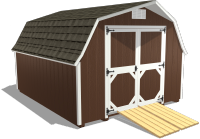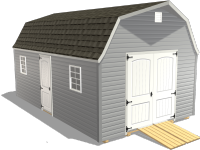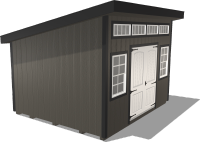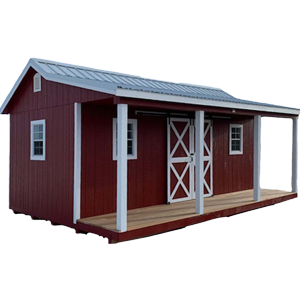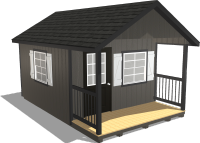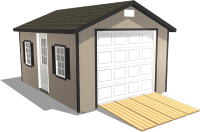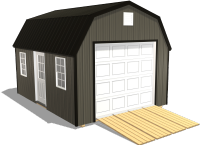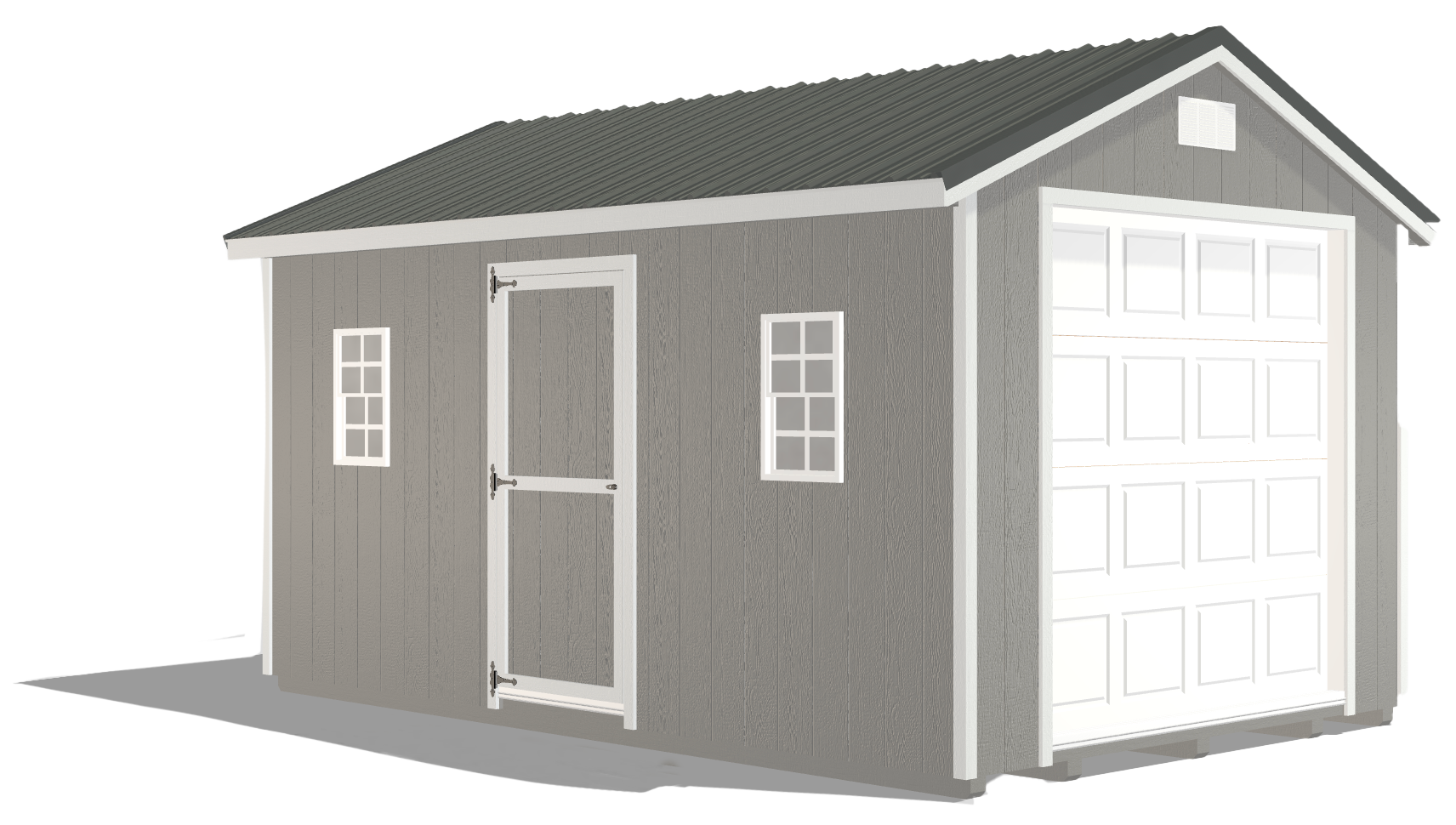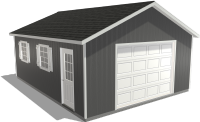Autumn Abundance: Balancing Summer Harvests and Cool-Weather Planting in Your Greenhouse
by Dakota Storage Buildings, on October 15, 2024

As autumn begins to settle in, greenhouse gardening offers a unique opportunity to extend your growing season and ensure an abundant harvest of fall plants well into the cooler months. While the transition from summer to fall can be challenging, with the right planning and strategies, you can manage the balance between harvesting your warm-weather crops and planting cool-weather vegetables. This guide will give you the insights needed to maintain a productive greenhouse for backyard gardening throughout autumn and prepare for the winter season ahead.
Cool-Season Vegetable for a Thriving Fall Greenhouse
Planting cool-season vegetables in the fall is crucial for continuous productivity in your greenhouse. These autumn-planting vegetables thrive in cooler temperatures and can be harvested well into the winter months.

Broccoli
Broccoli is an excellent choice for autumn greenhouse planting. Start by selecting a sunny spot in your greenhouse and preparing well-drained, nutrient-rich soil. You must water these fall plants regularly to ensure the soil stays moist but not waterlogged. To protect against common pests like aphids and cabbage worms, consider using row covers or organic insecticidal soap. Harvest broccoli when the heads are firm and tight, typically before the flowers start to bloom.
Cauliflower
Cauliflower requires careful attention to temperature and light. Ensure your greenhouse for backyard gardening provides plenty of sunlight, and keep the soil evenly moist. It thrives in cool weather, so plant it early in the fall to allow it to mature before the first frost. To prevent pests and diseases, rotate your crops each year and keep the greenhouse clean. Harvest cauliflower when the heads are compact and white.
Kale
Kale is a hardy green that flourishes in cooler temperatures. Prepare the soil by adding compost or well-rotted manure to improve fertility. Space the plants adequately to allow for air circulation and prevent diseases. Regularly harvest the outer leaves for a continuous supply of fresh kale. The flavor of kale often improves after exposure to light frost, making it an ideal autumn-planting vegetable.
Brussels Sprouts
Brussels sprouts are perfect for autumn growing since they develop best in cool weather. Plant them in a sunny area with fertile, well-drained soil. Support the fall plants with stakes or cages to prevent them from toppling over as they grow taller. Keep an eye out for pests like aphids, and use organic methods to control them. Harvest brussels sprouts from the bottom up as they reach about an inch in diameter.
Root Vegetables Perfect for Autumn Greenhouse Planting
Starting root vegetables in the fall allows them to develop slowly, resulting in sweeter, more flavorful crops. The cooler weather of autumn is ideal for these vegetables to thrive.

Carrots
Carrots are a great addition to your autumn greenhouse for backyard gardening. Prepare loose, sandy soil to allow the roots to grow straight and long. Water the fall plants consistently to keep the soil evenly moist, which helps prevent the roots from splitting. Thin the seedlings early to reduce competition and improve air circulation. Harvest carrots when they reach the desired size, usually after a light frost for enhanced sweetness.
Beets
Beets are another root vegetable that performs well in cool weather. Plant them in well-drained soil and provide plenty of sunlight. Water regularly, but avoid overwatering, as beets can easily rot in overly wet soil. To manage pests, keep the area weed-free and use organic deterrents like neem oil. Harvest beets when they reach a diameter of about 1.5 to 3 inches for the best flavor and texture.
Turnips
Turnips are a versatile root vegetable that is easy to grow in the fall. Plant them in rich, well-drained soil, and space the seeds properly to allow for adequate growth. Water consistently to keep the soil moist but not waterlogged. Turnips are best harvested when they are small and tender, typically around 2 to 3 inches in diameter. Larger turnips may become woody and lose their sweetness.
Cultivating Fresh Herbs in Autumn
Continuing herb cultivation during autumn not only extends your harvest but also enhances the flavor of your meals. Many herbs thrive in cooler temperatures and can be harvested throughout the season.

Thyme
Thyme is a robust herb that adapts well to cooler weather. Plant it in well-drained soil and position it in a sunny spot in your greenhouse. Regular pruning encourages bushy growth and prevents the plant from becoming too woody. Companion planting thyme with other vegetables can help deter pests naturally. Harvest thyme sprigs regularly to keep the plant productive.
Sage
Sage is another herb that flourishes in autumn greenhouse planting. Plant it in a sunny area with well-drained soil. Sage can be pruned lightly throughout the season to encourage new growth. Harvest the leaves as needed, and consider drying some for use in winter cooking. Sage is also known for its ability to repel certain pests, making it a valuable addition to your autumn garden.
Parsley
Parsley is a versatile herb that continues to grow well into the cooler months. Plant it in fertile, moist soil, and ensure it receives adequate sunlight. Flat-leaf parsley is often preferred for its stronger flavor, while curly parsley is valued for its decorative appearance. Regularly harvest the outer leaves to encourage continuous growth and prevent the plant from going to seed too quickly.
Getting Your Greenhouse Winter-Ready
Preparing your greenhouse for backyard gardening this winter is essential to protect your plants from the cold and maintain a productive growing environment.

Heating Your Greenhouse
As the temperatures drop, it is important to check and maintain your greenhouse heating system. Ensure that your heaters are functioning correctly and consider adding a backup heating source for extra security. Choose a heating system that suits the size of your greenhouse and your specific needs, whether it is electric, propane, or gas.
Insulation Strategies to Protect Your Plants
Proper insulation is crucial for retaining heat and keeping your plants healthy during the colder months. Consider adding bubble wrap or thermal screens to the inside of your greenhouse to create an additional layer of insulation. Insulating the greenhouse will not only protect your plants but also help you save on energy costs by reducing the amount of heating required.
Ventilation Tips for Winter
While keeping the greenhouse warm is important, proper ventilation is also necessary to prevent the buildup of mold and mildew. Make sure your ventilation systems are in good working order and consider using humidifiers or dehumidifiers to maintain the optimal humidity levels. Adequate ventilation will also help circulate fresh air and keep your plants healthy.
Achieve Greenhouse Success This Autumn
Greenhouse gardening in autumn offers a unique opportunity to balance the harvest of summer crops with the planting of cool-weather vegetables and herbs. By selecting the right crops and preparing your greenhouse for winter, you can ensure a productive growing season well into the colder months. Ready to elevate your autumn gardening experience? Explore Dakota Storage Buildings’ range of greenhouses or use our 3D Configurator to design a greenhouse for backyard gardening that meets your specific needs.





